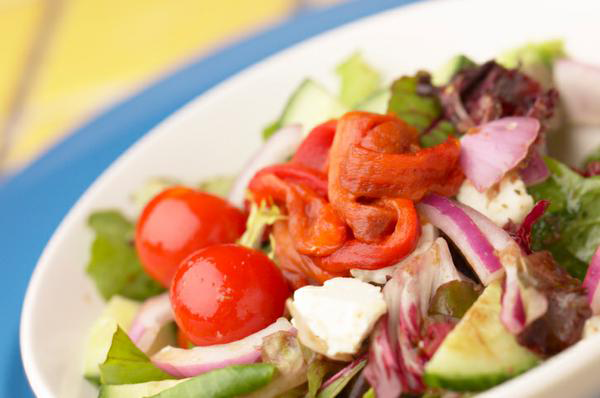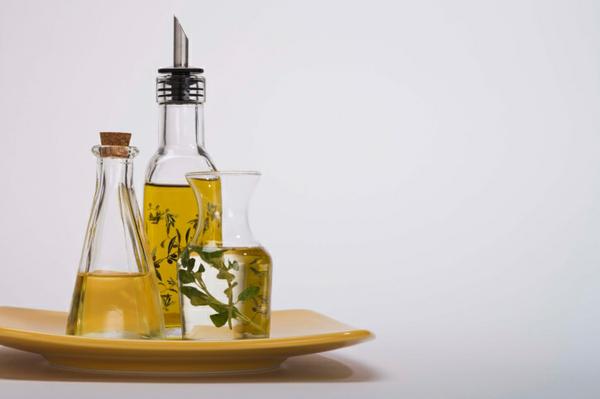4 Diet Mistakes That Lead to Weight Gain
Aging throws some hurdles into your heart health and weight loss plans. For one your metabolism drops every decade as you age. Here are some mistakes to avoid if you want to see success:
1. Eating the same way you did 10-20 years ago.
Your metabolism (the rate you burn calories) decreases about 2% every 10 years beginning at age 30. If you continue to eat the same amount year after year you will gain weight.
2. Skipping meals.
May temporarily “save calories”, but you’ll quickly replace the calories as hunger leads you to overindulge at the next meal. Skipping meals can also cause your metabolism to slow down.
3. Jumping from fad diet to fad diet.
Fad diet should be synonymous with “bad diet”. There’s no research to back up the claims that eliminating this food or adding that one will cause you to lose weight. Nor will eating at only certain times of the day give you the long term results you seek.
4. Keeping unhealthy snacks within reach.
If you only have potato chips and sweets in your cupboards you are not setting yourself up for success. You must keep fruits and vegetables and healthy high fiber snacks on hand if you are to be expected to include more in your diet.
What are some of your habits that are sabotaging your success? I’d love to hear them. Share as a comment below.
Here’s a link to 1-A-Week Weight Loss Tips – http://www.weightlosswithlisa.com.
All the best,
Lisa Nelson RD
Best Weight Loss Plan
http://www.bestweightlossplan.org
Heart Healthy Eating – 7 Salad Bar Mistakes to Avoid
 When trying to be heart healthy and lose weight a salad can be a great choice to include as a regular part of your meal plan – either as a vegetable side or the main entrée.
When trying to be heart healthy and lose weight a salad can be a great choice to include as a regular part of your meal plan – either as a vegetable side or the main entrée.
However, a salad can quickly become a weight loss disaster if you make the 7 mistakes below!
Mistake #1 – Selecting iceberg lettuce.
Iceberg lettuce is one of the most common forms of lettuce you’ll find in grocery stores and salad bars. Unfortunately iceberg lettuce provides minimal nutrients (mostly crunchy water). Select dark green, leafy lettuce varieties, such as romaine and endive. Also, greens like spinach and arugula provide added nutrients to your salad mix.
Mistake #2 – Skimping on fresh vegetables.
You can afford to splurge on fresh vegetables, such as broccoli, carrots, cabbage, peppers, cucumbers, tomatoes, and mushrooms. Fresh vegetables are low in calories and rich in vitamins and minerals.
Mistake #3 – Skipping the protein.
If your salad is your entrée it’s important to add some protein, such as chopped eggs, nuts and seeds, beans, or shredded meat (turkey/ham/chicken/seafood). Refer to How Much Protein Do You Need to Lose Weight? for a review of your protein needs.
Mistake #4 – Choosing a cream based soup.
Soup is often included on salad bars. Cream based soups tend to be high in calories and fat. Opt for broth based soups instead.
Mistake #5 – Loading up on salad toppings
Croutons, sesame noodles, and bacon bits are a few common salad toppings. These topping should be used sparingly. They provide minimal nutrients and are high in calories.
Mistake #6 – Selecting a high fat, high calorie salad dressing.
Now, if you’ve avoided the first five mistakes, you don’t want to ruin your nutritious salad with a poor dressing choice. Opt for vinegar based salad dressings or low fat/calorie salad dressing if available and use sparingly. Tip: Dip your fork in a small cup of salad dressing before every bite instead of pouring the dressing on your salad. You get great flavor with every bite and use significantly less dressing.
Mistake #7 – Making too many trips to the salad bar.
Even if your salad bar includes unlimited trips it’s not necessary to go back multiple times – which can be very tempting. Decide in advance how many trips you’ll make and stick with your plan. Even though a well-balanced salad is a healthy choice, too much of a good thing can quickly turn bad!
All the best,
Lisa Nelson RD
Combat Holiday Weight Gain with a Battle Plan
The holidays can be a big hurdle in a weight loss/health plan. Holidays don’t mean you can’t enjoy the good food and desserts.
Here are 5 tips for a healthier holiday:
- Plan Ahead – It will help if you have a plan in place ahead of time. Decide if you are going to have seconds in advance and what you are going to have seconds of. For example, mashed potatoes and gravy can be loaded with calories and fat, so opt for seconds of a healthier salad or other side dish. Be sure to plan out the desserts, too. If pecan pie is a weakness, put in place a realistic plan. One slice and a cookie. . .?
- Low Calorie Snacks – While you are visiting and waiting for the main meal to be served, snack wisely. Select low calorie veggies to much on versus fatty appetizers. “Save” your calories for the meal.
- Socialize – Take the time during your holiday meal to catch up with family and friends. This will slow down how quickly you eat and are running back for seconds. You may find that you’re full and not need that second helping!
- Watch the Liquid Calories – A glass of wine can add 120 calories and egg nog 340! Do you really need a second glass?
- Prepare a Healthier Dish – Is your holiday gathering a potluck? If so, prepare a healthy alternative you like.
These are just a few steps you take to prevent holiday weight gain. Join dietitians Ursula Ridens RD and Lisa Nelson RD for the free teleclass “10 Secrets to Survive the Holidays Without Gaining Weight”. You’ll learn more about steps you can take to stop holiday weight gain and have your specific questions answered. Go to https://www.lisanelsonrd.com/newu/holidaycall.html to sign up!
Food Cost – Should unhealthy foods be taxed?
How would you feel if the food cost of unhealthy foods increased?
For a study published in The Milbank Quarterly, researchers looked at price and energy/nutrient density of foods, food consumption, and price changes via tax or subsidy. It was found that raising the price of less healthy foods and lowering the price of healthy foods being linked to reduced body weight and decreased obesity. However, it should be noted that small price changes were not likely to result in substantial weight improvements.
So, would you be in favor of taxing less healthy food options and subsidizing healthy food costs to lower the price?
All the best,
Lisa Nelson RD
Heart Healthy Tips
2009 Essential Wellness Telesummit – Be Happy, Healthy, and Wealthy
Liz Copeland has brought together leading international experts and authors in the fields of health, happiness, and life enrichment to bring you the 2009 Wellness Telesummit! Join us to learn about essential wellness!
Join Liz and three other experts for a FREE 4-day Telesummit to guide you to:
- forgiving the unforgiveable to gain perfect freedom
- shedding the inner and outer clutter – so you can have love, health and financial abundance
- be heart healthy and live long
- overcoming the number one diet-sabotage habit so you can be the shape of your dreams
The Telesummit begins Monday, April 20, 2009.
All the best,
Lisa Nelson RD
Be Heart Healthy and Lose Weight
Heart Health and Weight Loss – How much fat do you need?

I want to talk about the fat in your diet. When it comes time to lose weight one of the first steps is to switch to a low fat diet. I want to caution you not to drop your fat intake too low. Yes, you need to watch the fat calories, but some fat is needed everyday for optimal health.
Fat is an essential component of a healthy diet providing energy and the fat soluble vitamins A, D, E, and K. Some types of fat even reduce your risk for certain chronic diseases, such as heart disease.
What’s important is the amount and type of fat. I recommend restricting fat intake to ~30% of your total daily calories. This would mean if you are consuming 1500 calories per day, 450 calories or 50 grams would come from fat sources.
Now, you need to make sure these fat sources are healthy. Here are examples of healthy fat sources to include in your diet in moderation:
Olive oil
Avocados
Seeds
Nuts
Peanut butter
Fish
Some fat in your diet actually promotes weight loss by helping you feel full longer, decreasing your likelihood to snack too much and overeat!
February is American Heart Month. In recognition of American Heart Month you can access Heart Health Made Easy at a 25% savings. Learn more about this take action guide to lower cholesterol and blood pressure at http://www.hearthealthmadeeasy.com.
All the best,
Lisa Nelson RD
Be Heart Healthy and Lose Weight



